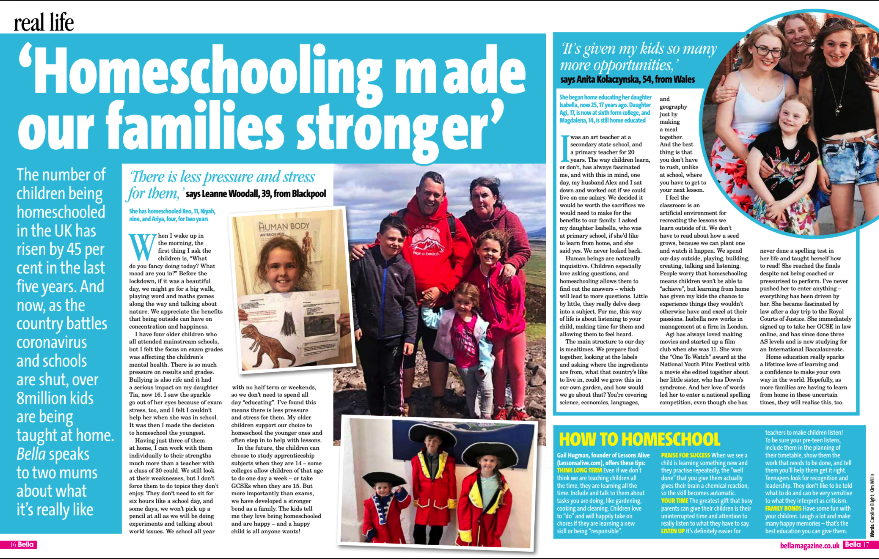
Newsflash!! Some of Gail’s advice on home schooling has been published in Bella magazine, out on 14th April!
As parents spend more time with their children at home, the home learning aspect can be a little daunting for some however, it can also become a great adventure!
Even if we don’t think we are teaching children all the time, we can be sure they are learning all thetime!
- The first ten years of life, your child will do their most rapid learning in life; creating neural pathways and making connections. Young children rely on their feelings to help themunderstand the world while their knowledge and experience grows. By understanding this, we can help the process by including them and talking about what we’re doing and why, as appropriate; when we’re gardening; cooking; cleaning; shopping (if it is safe to go out) or choosing, if it is online. Children love to ‘do’ and will happily take on chores especially if they are learning a new skill or being ‘responsible’.
- If we go through the spice rack or fridge and let them see, feel, taste, smell herbs/spices/vegetables/fruit we are adding to their reference bank. There are many, many opportunities for us to teach during the day – and they don’t all involve a worksheet or a screen!
- Look at leaves/trees/flowers/plants/birds….all of these are valuable references which help children engage with the world and their surroundings. You can increase their knowledge, vocabulary and appreciation for the natural world – even if all you have is a window box!
- How many different types of paper can they collect in the house…newspaper, post-its; wrapping paper, loo paper (possibly!)….let them feel and compare all the different types – teach them vocabulary to go with the various textures and surfaces. All of this will help children to develop skills and knowledge.
- When we see a child is learning something new and they practise repeatedly to get the hang of it, as soon as they show you, the wholehearted ‘Well Done!’ that you give them actually helps their brain to seal that neural pathway (seriously, with a chemical reaction!) so that that skill becomes automatic. This is why we need to ‘catch the children doing it right’ and congratulate them at the time!
- How many ways can we think of to develop patience? By learning to cut out or trace; by learning to juggle; by learning to draw or observe or by learning to make visors for the NHS – all of these activities – and many others – can help your child develop patience! The important question to ask when teaching youngsters, is ‘what is this child actually learning or developing from what they are now doing?’ – learning the content taught at school is small part of what they need to learn for life and it can be quickly caught up once schools reopen if you find it is too tricky to tackle at home. Fret not. Enjoy the time!






Leave a Reply